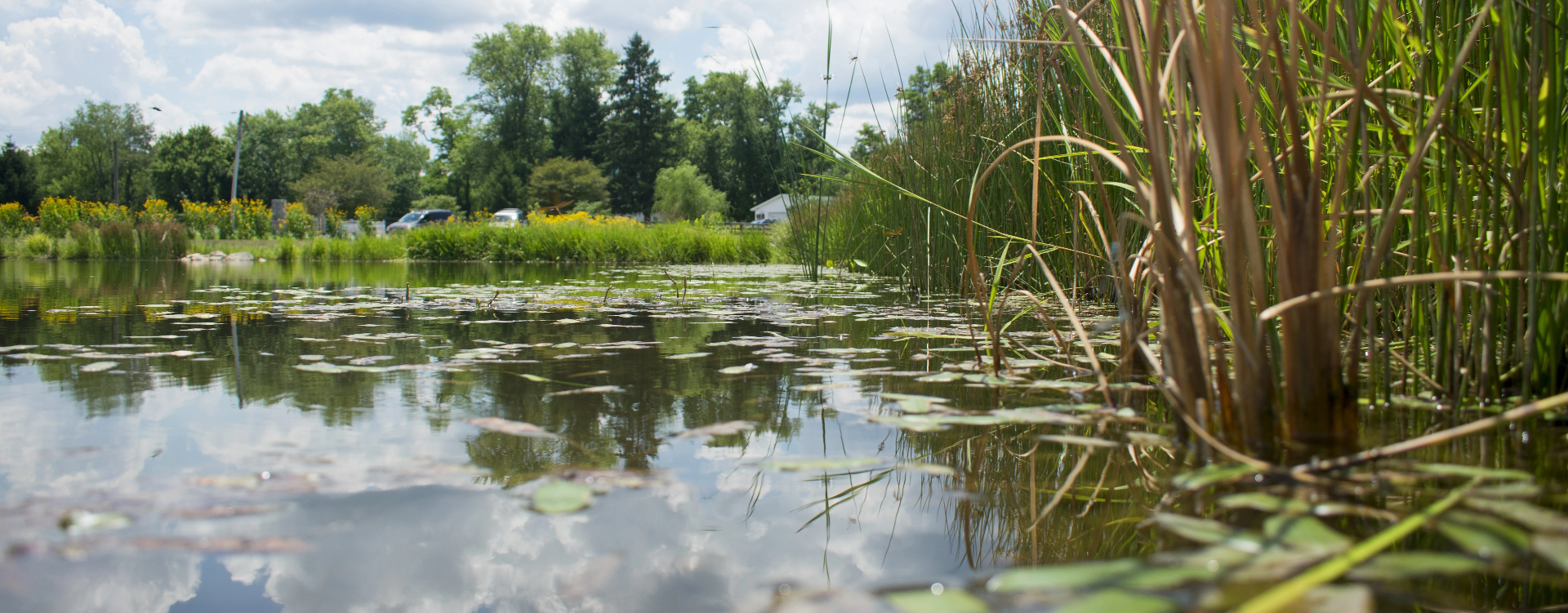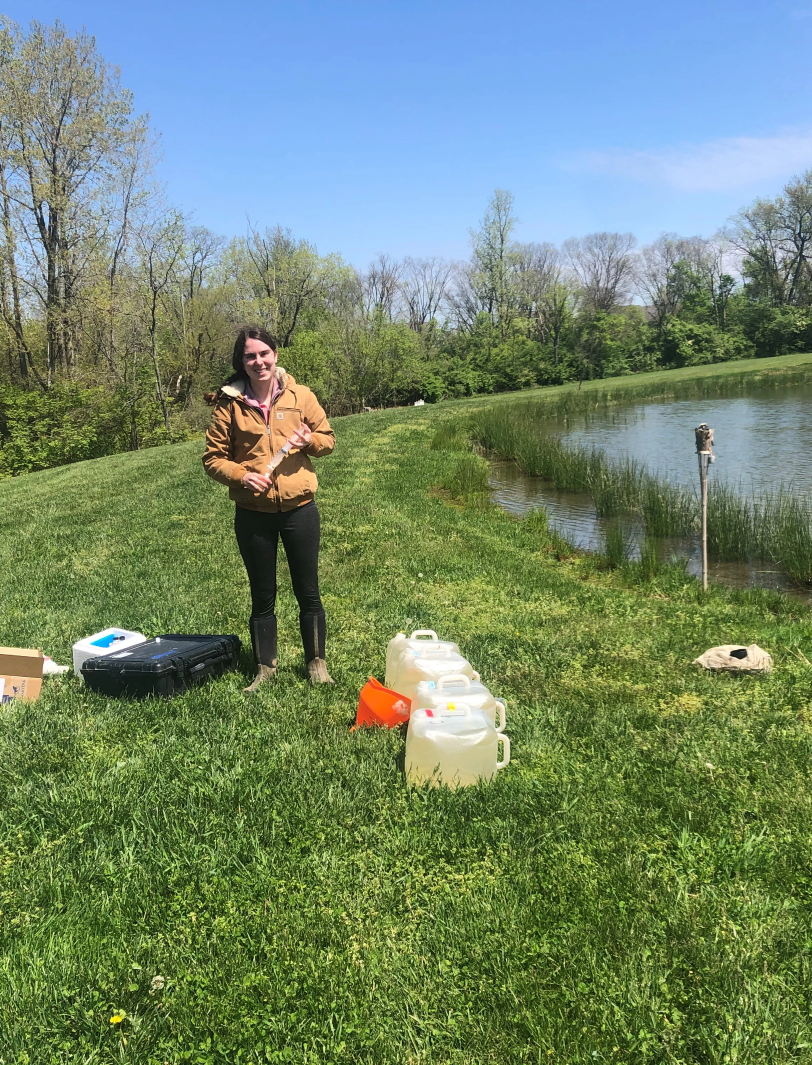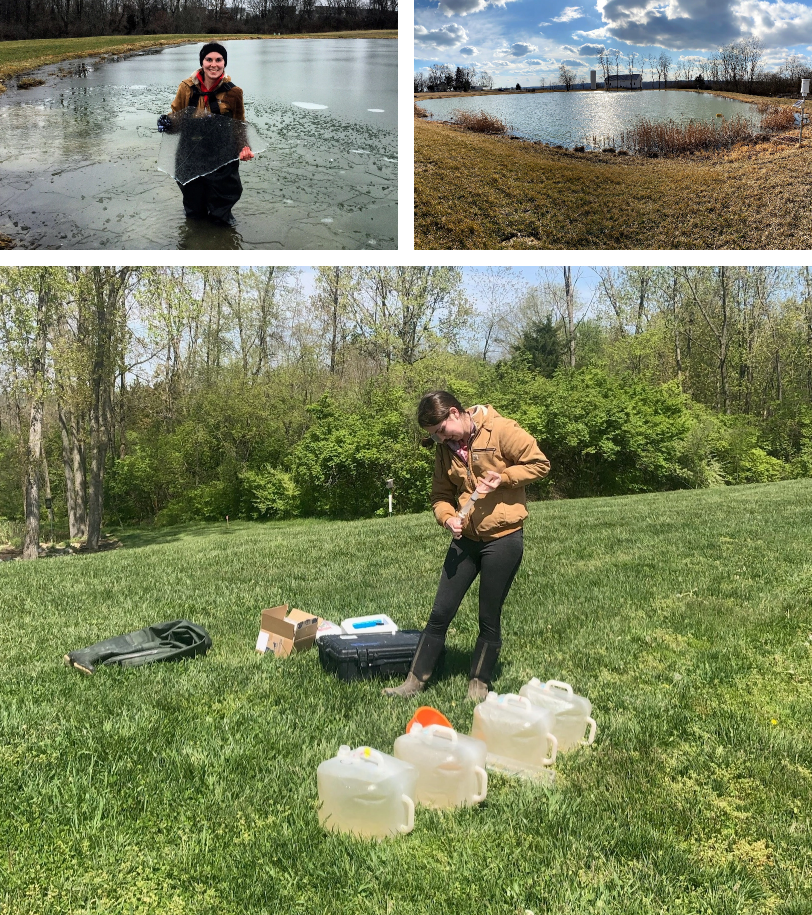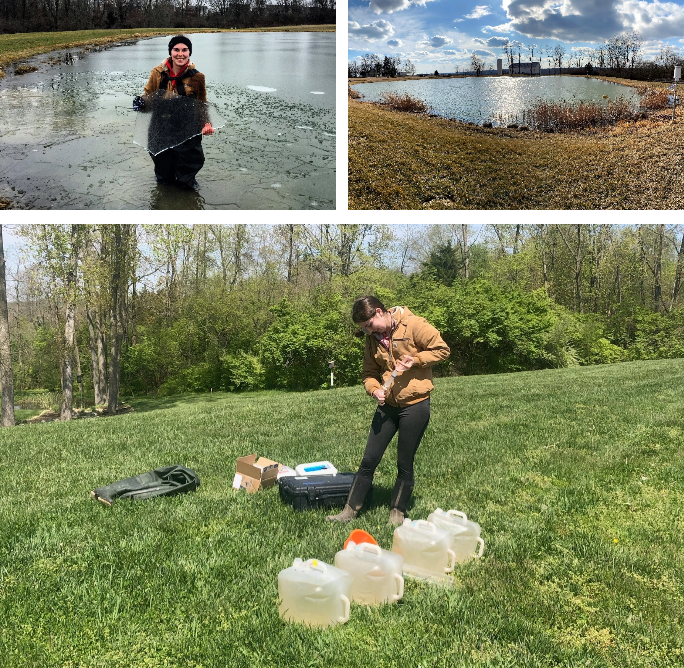

University Research:
Sponsoring Local Environmental Studies
Research Opportunities
University Research:
Sponsoring Local Environmental Studies
Sponsoring Local Environmental Studies
Fondriest Environmental owns 72 acres of ecologically rich land adjacent to the Beaver Creek Wildlife Area that is used for research by local universities. The area is also home to the Field Station, a place for graduate and undergraduate students to collect water quality and environmental data needed for theses and ongoing studies.
From weather and water quality monitoring to soil restoration, there are numerous research topics that can be explored at the Field Station. Scientists from Fondriest Environmental support students by providing training on various instruments that might be used during the research and offering hands-on help if needed.
Fondriest welcomes anyone who is interested in learning more to please submit a form using the following link and see how the science team at Fondriest can help with your research! Read about the different research projects done at the Fondriest Field Station below!
From weather and water quality monitoring to soil restoration, there are numerous research topics that can be explored at the Field Station. Scientists from Fondriest Environmental support students by providing training on various instruments that might be used during the research and offering hands-on help if needed.
Fondriest welcomes anyone who is interested in learning more to please submit a form using the following link and see how the science team at Fondriest can help with your research! Read about the different research projects done at the Fondriest Field Station below!


Settling Pond and Wetland Research
Excess nutrients (nitrogen and phosphorus) can negatively impact the quality of a water body. Phytoplankton and algae feed on these nutrients, and their communities can grow rapidly, changing the water quality. Excess nutrients normally come from runoff after rain events, and areas with agricultural land tend to have runoff with a larger amounts of nitrogen and phosphorus from the fields. A body of water with high amounts of nutrients, algae, aquatic plants, and fish, are typically classified as eutrophic. Eutrophication can lead to harmful algal blooms, fish kills, and increased water turbidity. When the algal communities die, they decompose and reduce dissolved oxygen levels, which other aquatic species need to survive. Wetlands, agricultural settling ponds, field buffers, and cover crops can help reduce the amount of nutrients being washed into a body of water.
Wright State graduate student Marie Bezold collected sediment cores from an agricultural settling pond at the Field Station from October 2019 to October 2020. The sediment cores were analyzed to determine how nutrients cycled throughout the sediments and overlying water column. Her research focused on how sufficiently agricultural settling ponds paired with wetlands can scale down the amount of nitrogen entering bodies of water (nitrogen loading) and how well they can remove nitrogen from the system.
Nitrogen is primarily removed from a body of water by a microbial process known as denitrification that converts nitrate (NO3-) to nitrogen gas (N2). Nitrogen primarily enters a body of water via runoff, algal decomposition (organic remineralization), or a microbial process known as nitrogen fixation, where N2 is converted into a source of energy. Nitrogen fixation can be thought of as another way for microbes to “breathe,” similar to how humans breathe and gather energy from oxygen. By analyzing the nutrient pathways, she could understand whether the sediments add nitrogen to the water body (source) or remove nitrogen from the water body (sink).
Wright State graduate student Marie Bezold collected sediment cores from an agricultural settling pond at the Field Station from October 2019 to October 2020. The sediment cores were analyzed to determine how nutrients cycled throughout the sediments and overlying water column. Her research focused on how sufficiently agricultural settling ponds paired with wetlands can scale down the amount of nitrogen entering bodies of water (nitrogen loading) and how well they can remove nitrogen from the system.
Nitrogen is primarily removed from a body of water by a microbial process known as denitrification that converts nitrate (NO3-) to nitrogen gas (N2). Nitrogen primarily enters a body of water via runoff, algal decomposition (organic remineralization), or a microbial process known as nitrogen fixation, where N2 is converted into a source of energy. Nitrogen fixation can be thought of as another way for microbes to “breathe,” similar to how humans breathe and gather energy from oxygen. By analyzing the nutrient pathways, she could understand whether the sediments add nitrogen to the water body (source) or remove nitrogen from the water body (sink).


Marie had four hypotheses for the pond sediments at the field Station:
1. One of the primary removal pathways for NO3- will be denitrification
2. Throughout the whole year, the sediments would reduce the amount of nitrogen in the water and store it in the sediments (sink)
3. During the spring and summer months, the sediments will show net denitrification (sink) and then will switch to net nitrogen fixation (source) during the fall and winter months
4. The sediments will be a source of ammonium and soluble reactive phosphorus
After Marie’s study, her results supported hypotheses 1 and 4 but did not fully support hypotheses 2 and 3. She found that the sediments released more nitrogen into the body of water (net nitrogen source) due to nitrogen fixation and organic remineralization. Nitrogen fixation likely occurred due to a lack of available nitrogen in the water body that limited algal and phytoplankton growth. However, after fertilizer applications and rain events, the sediments switched to net denitrification and removed excess nitrogen (net nitrogen sink).
Her research exhibits the importance of having an agricultural settling pond paired with a wetland in reducing nitrogen loading into nearby water systems. The settling pond proved to have more of an impact on reducing nitrogen loading; however, the wetland still had a significant influence as well. Together, they help mitigate excess nutrients from running off the agricultural land and into nearby streams and rivers.
1. One of the primary removal pathways for NO3- will be denitrification
2. Throughout the whole year, the sediments would reduce the amount of nitrogen in the water and store it in the sediments (sink)
3. During the spring and summer months, the sediments will show net denitrification (sink) and then will switch to net nitrogen fixation (source) during the fall and winter months
4. The sediments will be a source of ammonium and soluble reactive phosphorus
After Marie’s study, her results supported hypotheses 1 and 4 but did not fully support hypotheses 2 and 3. She found that the sediments released more nitrogen into the body of water (net nitrogen source) due to nitrogen fixation and organic remineralization. Nitrogen fixation likely occurred due to a lack of available nitrogen in the water body that limited algal and phytoplankton growth. However, after fertilizer applications and rain events, the sediments switched to net denitrification and removed excess nitrogen (net nitrogen sink).
Her research exhibits the importance of having an agricultural settling pond paired with a wetland in reducing nitrogen loading into nearby water systems. The settling pond proved to have more of an impact on reducing nitrogen loading; however, the wetland still had a significant influence as well. Together, they help mitigate excess nutrients from running off the agricultural land and into nearby streams and rivers.
Come Visit Us!

We will accommodate your schedule and can work with up to 50 people at a time. We can help with training on equipment for environmental monitoring and instrument calibrations, school field trips, research projects, and more. Please contact us to see how we can assist you!
To get in touch with us and gather further information, you can click on the link below.
To get in touch with us and gather further information, you can click on the link below.
Come Visit Us!
We will accommodate your schedule and can work with up to 50 people at a time. We can help with training on equipment for environmental monitoring and instrument calibrations, school field trips, research projects, and more. Please contact us to see how we can assist you!
To get in touch with us and gather further information, you can click on the link below.
To get in touch with us and gather further information, you can click on the link below.


